Associated Conditions
While primary ciliary dyskinesia (PCD) primarily affects the lungs, ears, and sinuses, it can also lead to other health issues—especially those related to how the body’s organs are arranged (known as laterality or situs issues). In rare cases, individuals with PCD may have malformations of organs in the chest or abdomen.
Organ Placement: Situs Inversus & Other Variants
The term laterality refers to the way our internal organs are positioned on the left and right sides of the body. Our bodies are naturally asymmetric—for example, the heart is usually on the left. This asymmetry is guided early in embryonic development by the movement of special cilia (called nodal cilia), which are only present for a brief time.
When these nodal cilia don’t function properly—something that can happen with many PCD gene mutations—organ placement can become random. As a result:
- About 50% of people with PCD have normal organ placement (situs solitus)
- Around 50% have situs inversus, where organs are mirrored from their usual locations
- A smaller group has situs ambiguus (also called heterotaxy), where organs are arranged in an unusual or inconsistent way
What Is Kartagener Syndrome?
Kartagener syndrome is an older term used to describe people with PCD who also have situs inversus. Since this combination only applies to a portion of PCD patients, the term is somewhat outdated, but it’s still used in medical literature.
People with normal organ placement or heterotaxy do not have Kartagener syndrome. For more on PCD terminology, see our guide: What’s in a Name? A Brief History of PCD Terminology.
Situs Ambiguus & Heterotaxy Complications
Situs ambiguus or heterotaxy can lead to serious complications, especially involving the heart and spleen.
Spleen Abnormalities: Asplenia & Polysplenia
- Polysplenia means having multiple small spleens (splenules)
- Asplenia means being born without a spleen
The spleen plays a vital role in filtering blood and fighting infection. Some individuals with PCD and heterotaxy may have one of these conditions. While splenic function is usually preserved in polysplenia, some people may have functional asplenia, where the spleens don’t work well enough. A blood test can check for this by looking for Howell-Jolly bodies. In severe cases, surgical intervention may be needed.
Congenital Heart Defects
Heart defects are more common in PCD when heterotaxy is present. These may include:
- Holes in the walls between the heart’s chambers (septal defects)
- More complex structural heart malformations
Some of these conditions may require immediate treatment or surgery after birth.
Hydrocephalus
Hydrocephalus is a rare but possible complication in PCD. It occurs when excess cerebrospinal fluid builds up in the brain’s ventricles, causing them to enlarge. If untreated, it can lead to brain damage.
The ventricles are lined with cilia, and when these don’t work correctly, fluid may not drain as it should. In animal models of PCD, hydrocephalus is more common, but in humans, it’s thought that walking upright (bipedalism) may help prevent fluid buildup through the assistance of gravity.
A milder version, called ventriculomegaly, involves enlarged ventricles without fluid buildup and has also been rarely reported in PCD.
Fertility & Reproductive Health
Fertility issues are common in PCD but vary from person to person.
- Males often experience infertility due to immobile sperm, though some are able to conceive naturally.
- Females may have sub-fertility or a higher risk of ectopic (tubal) pregnancy, but many are able to conceive without assisted reproductive technology.
It’s important to remember that most people with PCD produce healthy eggs and sperm—the challenge is often mechanical, meaning sperm or eggs can’t move properly. Assisted reproductive technologies like IVF and ICSI have been used successfully in many cases.
Rare Syndromic Associations
PCD is usually inherited in a recessive pattern—meaning both parents must carry and pass on a non-working copy of the same gene. In very rare cases, PCD may be inherited in an X-linked manner or occur along with a chromosomal deletion or syndrome.
Examples of these rare associations include:
- Cri du Chat syndrome (involving chromosome 5, where the DNAH5 gene is located)
- Oral-Facial-Digital syndrome
- Retinitis pigmentosa
These forms of PCD are extremely rare and usually come with other complex health conditions.
Looking Ahead
As researchers continue studying PCD, it’s likely that more associated conditions will be discovered. These are expected to vary by specific gene mutation and will not affect everyone with PCD.

